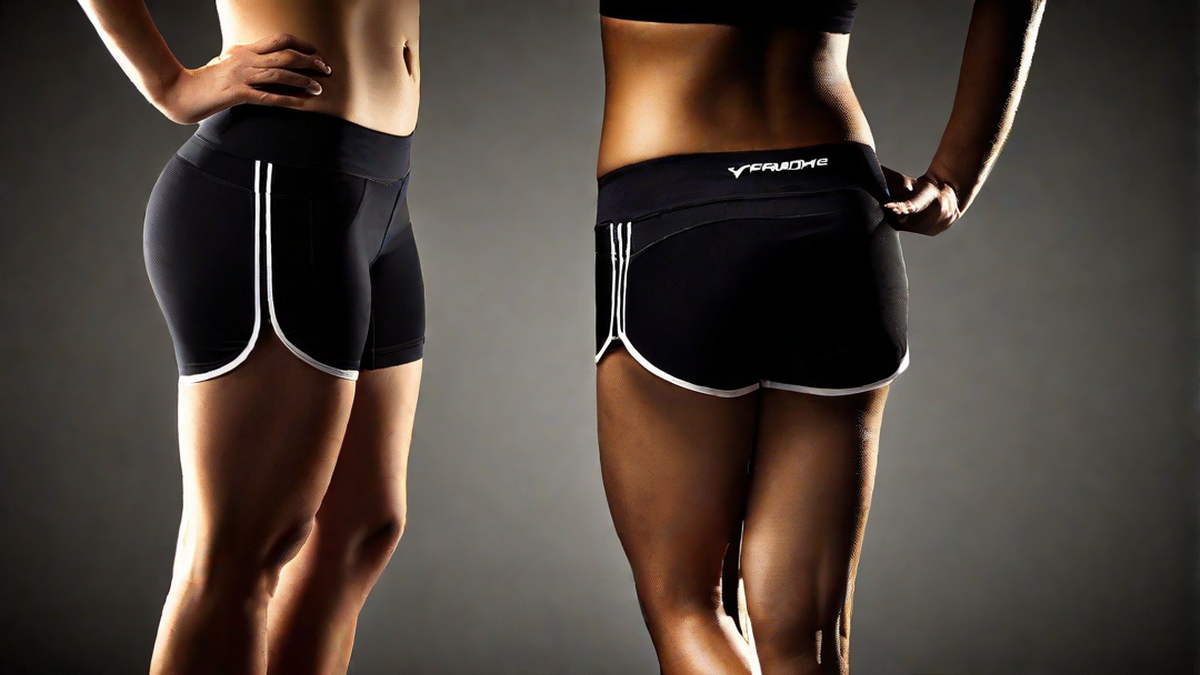When it comes to finding the perfect pair of running shorts, there are a few key measurements that can make all the difference in terms of comfort and performance. As someone who has spent countless hours pounding the pavement, I’ve learned firsthand the importance of finding shorts that fit just right. In this article, I’ll dive deep into the world of measuring running shorts, sharing personal experiences and insights along the way.
The Waist Measurement
One of the most crucial measurements when it comes to running shorts is the waist measurement. After all, you want your shorts to stay in place as you move, without any uncomfortable slipping or sliding. To determine your waist measurement, take a flexible tape measure and wrap it around the narrowest part of your waist, typically an inch or two above your belly button.
For me, finding the right waist size has always been a challenge. I have a smaller waist but wider hips, so I often struggle to find shorts that fit snugly without feeling too tight. However, over time, I’ve discovered certain brands and styles that offer a more tailored fit, allowing me to concentrate on my run without constantly adjusting my waistband.
The Inseam Length
Another vital measurement to consider when choosing running shorts is the inseam length. This refers to the distance from the crotch to the bottom hem of the shorts. The ideal inseam length can vary depending on personal preference and body type.
For shorter runs or hot weather, I tend to prefer shorter inseam lengths, around 3 to 5 inches. This allows for more freedom of movement and better airflow. However, when it comes to longer runs or cooler temperatures, I opt for longer inseams, around 7 to 9 inches, to provide extra coverage and warmth.
The Rise
The rise of running shorts refers to the distance between the crotch and the waistband. This measurement can greatly impact the overall fit and comfort of the shorts. For those who prefer a more secure and supportive fit, a higher-rise waistband might be the way to go. However, if you’re someone who likes a lower-rise fit, there are plenty of options available as well.
Personally, I’ve found that a mid-rise waistband works best for me. It provides enough coverage and support without feeling restrictive or uncomfortable. It’s all about finding what works for your body and running style.
Additional Considerations
While the waist measurement, inseam length, and rise are the primary measurements to consider, there are a few other factors worth mentioning. The fabric composition, stretch, and overall construction of the shorts can also impact the fit and performance.
When it comes to fabric, I tend to gravitate towards moisture-wicking materials that help keep me cool and dry during intense workouts. Additionally, I look for shorts with a bit of stretch, as this allows for a greater range of motion and prevents any feeling of restriction.
Lastly, it’s important to take into account the overall construction of the shorts. Look for features such as flatlock seams, which reduce chafing and irritation, and a secure waistband closure, such as a drawstring or elastic, to ensure a comfortable and secure fit.
Conclusion
As a dedicated runner, finding the right pair of running shorts can make all the difference in terms of comfort and performance. By considering measurements such as the waist, inseam length, and rise, along with other important factors like fabric and construction, you can ensure a more enjoyable running experience.
Remember, finding the perfect pair of running shorts is a personal journey. What works for one person may not work for another, so don’t be afraid to try on different styles and brands to find what suits you best. Happy running!

